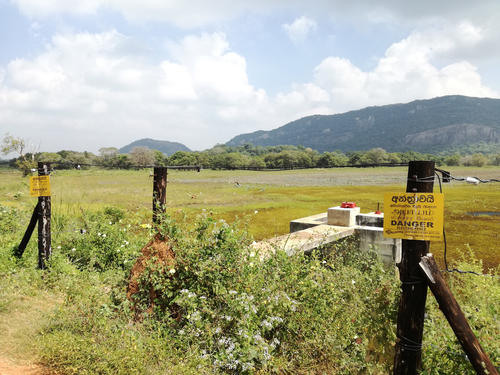Transformation: current challenges
A recently established elephant fence surrounding the entire tank in Manewa. Old chena lands were included and restricted as part of a wildlife sanctuary with this new innovation
Poor interventions in irrigation infrastructure by the professionals and engineers and too little integration of the farmers’ knowledge and experience into such decisions have been identified as major issues.
In previous times chena cultivation was an integral part of the tank village life and indigenous agricultural system. Due to governmental interventions the farmers are now subject to many restrictions arising from wildlife policies. Most recently, the Wildlife Department put an elephant fence on a tank bund surrounding the entire Manewa tank. In consequence, ancient chena lands were included in a wildlife sanctuary and farmers had restricted access.
These unaligned courses of action severely influence the livelihoods of the farmers as well as the balance of the landscape. Farmers in the case study village of Manewa also highlighted that the government officers are rarely concerned with farmers’ views and indigenous management practices. According to the farmers, this poor management combines with environmental problems such as dry periods or droughts to cause crop failures. The popularization of cash crops such as guava causes many difficulties for the traditional farming community and the landscape balance because the guava farmers use the land and water resources of the villages but at the same time remain outside the collective farming activities. Changing land use activities also changes the behaviour of wildlife. Furthermore, farmers mentioned some political influencing of decisions within the Farmer Organizations.
